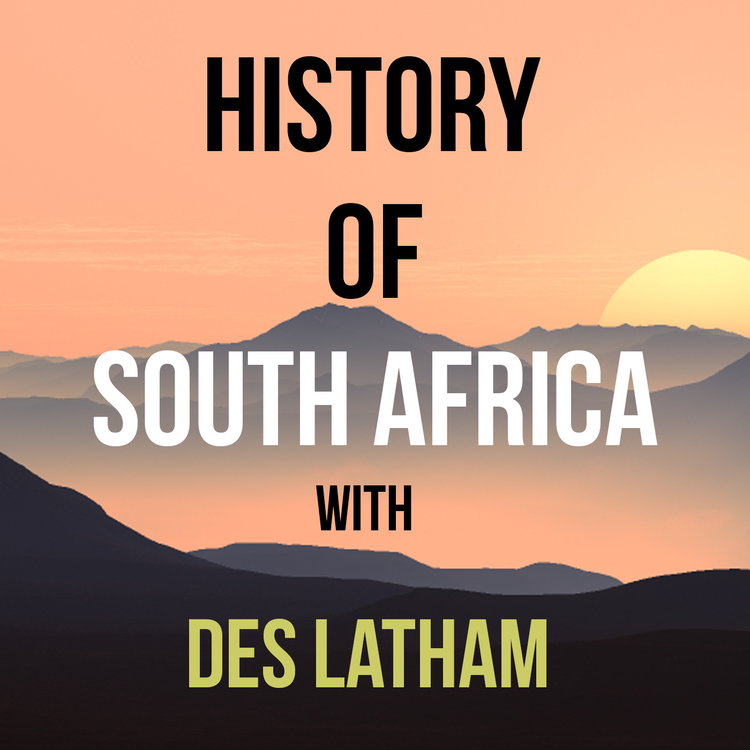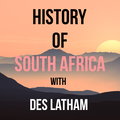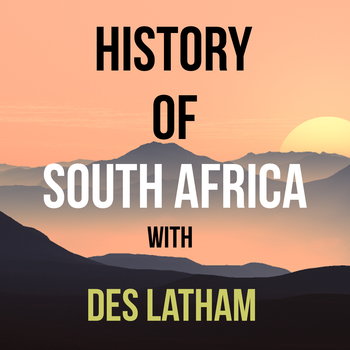
Episode 152 - The amaTola San raiders of the Drakensberg: Horses, plant meds and the Chacma Baboon
Loading player...
This is episode 152, we’re going to dig into a story that is not often told — the amaTola San raiders of the Drakensberg. They emerged by the end of the third decade of the 19th Century as a result of a mish-mash of forces at play on the veld.
And what a remarkable story this is so hold onto your horses! Literally as it would appear.
What has been re-discovered recently is the identification of a plethora of mounted frontier raiding groups and how these had impacted the interior of Southern Africa, and in particular, the mountains north-east of the Cape Colony.
Certain frontier raiding groups often referred to simply as ‘Bushmen’ were really comprised of members from many formerly distinct ethnicities, and included the progeny from subsequent inter-marriage.
Cultural and ethnic mixing, the advent of the horse, the increased access to guns and ammunition, and the need for identity to adapt to these changes, resulted in a volatile mix indeed.
There were freed slaves, Khoesan, San, and English soldiers who’d gone AWOL, as well as descendants of former VOC soldiers who were Swedish, German, Swiss, and Dutch.
There’s a correlation here with the American Frontier experience, where men and sometimes women, armed with muskets, bows, and spears, wearing feathered headgear or wide-brimmed trekboer hats and riding horses, raided their neighbours for cattle and horses or exchanged these valuable resources for corn, tobacco, dogs and alcohol, much like other nineteenth century frontiers.
There the roaming bandits were the Jumanos, the Lakota, the Metis, all became seminal in the B-grade Western movies of the 1950s.
South Africa’s bandits and raiders were arraigned across a large area, but perhaps the most interesting were those living in the amaTola mountains, a mixture of people who were on the fringes of society.
Because horses were only introduced to the Drakensberg in the 1830s and production of hunter-gatherer rock art in that region had almost entirely ceased by the 1880s, horse paintings are comparatively tightly pinpointed in time, unlike virtually all other categories of images in southern African rock art.
San paintings of this time reveal quite an astonishing fact, these people had a mixed material culture, the paintings who San and others who were not San working together, carrying firearms, riding horses with their dogs running alongside, carrying spears and bows, and importantly, dancing their trance dances.
The area I’m addressing lies between the Mzimvubu River and the Tina River, across the central Drakensburg in other words, across both sides of the escarpment, stretching from Giants Castle in modern Kwa-Zulu Natal to Mount Fletcher in the Eastern Cape and Matsaile inside Lesotho.
Glancing at a map, and tracing folks living in this area in 1840 you’d find the Voortrekkers arraigned inland from Port Natal, around Pietermaritzburg, and up to the headwaters of the Umgeni, the Mooi River and Bushman’s River just below Giant’s Castle.
From here the San Raiders controlled the landscape, along the ridges of the Drakensberg south westerly to Mount Fletcher, in the slopes above the Senqu River or the headwaters of the Orange Riverif you prefer.
This overlooked where the Bhaca lived, south east of them, the amaMpondo, further south the Mpondomise, then further the amaThembu, to their east and south the amaXhosa could be found and to their south, the English settlers in Albany. I hope you can feel the proximity of these amaTola raiders because everyone in these areas were somewhat fearful of the gangs of men on horses.
The San raiders were based in that mountain redoubt between Giant’s Castle and Mount Fletcher and they were surrounded by enemies but also prospective allies. This mountain redoubt was getting a bad name, and soon would be identified on maps from the 1840s onwards as nomansland.
And what a remarkable story this is so hold onto your horses! Literally as it would appear.
What has been re-discovered recently is the identification of a plethora of mounted frontier raiding groups and how these had impacted the interior of Southern Africa, and in particular, the mountains north-east of the Cape Colony.
Certain frontier raiding groups often referred to simply as ‘Bushmen’ were really comprised of members from many formerly distinct ethnicities, and included the progeny from subsequent inter-marriage.
Cultural and ethnic mixing, the advent of the horse, the increased access to guns and ammunition, and the need for identity to adapt to these changes, resulted in a volatile mix indeed.
There were freed slaves, Khoesan, San, and English soldiers who’d gone AWOL, as well as descendants of former VOC soldiers who were Swedish, German, Swiss, and Dutch.
There’s a correlation here with the American Frontier experience, where men and sometimes women, armed with muskets, bows, and spears, wearing feathered headgear or wide-brimmed trekboer hats and riding horses, raided their neighbours for cattle and horses or exchanged these valuable resources for corn, tobacco, dogs and alcohol, much like other nineteenth century frontiers.
There the roaming bandits were the Jumanos, the Lakota, the Metis, all became seminal in the B-grade Western movies of the 1950s.
South Africa’s bandits and raiders were arraigned across a large area, but perhaps the most interesting were those living in the amaTola mountains, a mixture of people who were on the fringes of society.
Because horses were only introduced to the Drakensberg in the 1830s and production of hunter-gatherer rock art in that region had almost entirely ceased by the 1880s, horse paintings are comparatively tightly pinpointed in time, unlike virtually all other categories of images in southern African rock art.
San paintings of this time reveal quite an astonishing fact, these people had a mixed material culture, the paintings who San and others who were not San working together, carrying firearms, riding horses with their dogs running alongside, carrying spears and bows, and importantly, dancing their trance dances.
The area I’m addressing lies between the Mzimvubu River and the Tina River, across the central Drakensburg in other words, across both sides of the escarpment, stretching from Giants Castle in modern Kwa-Zulu Natal to Mount Fletcher in the Eastern Cape and Matsaile inside Lesotho.
Glancing at a map, and tracing folks living in this area in 1840 you’d find the Voortrekkers arraigned inland from Port Natal, around Pietermaritzburg, and up to the headwaters of the Umgeni, the Mooi River and Bushman’s River just below Giant’s Castle.
From here the San Raiders controlled the landscape, along the ridges of the Drakensberg south westerly to Mount Fletcher, in the slopes above the Senqu River or the headwaters of the Orange Riverif you prefer.
This overlooked where the Bhaca lived, south east of them, the amaMpondo, further south the Mpondomise, then further the amaThembu, to their east and south the amaXhosa could be found and to their south, the English settlers in Albany. I hope you can feel the proximity of these amaTola raiders because everyone in these areas were somewhat fearful of the gangs of men on horses.
The San raiders were based in that mountain redoubt between Giant’s Castle and Mount Fletcher and they were surrounded by enemies but also prospective allies. This mountain redoubt was getting a bad name, and soon would be identified on maps from the 1840s onwards as nomansland.

